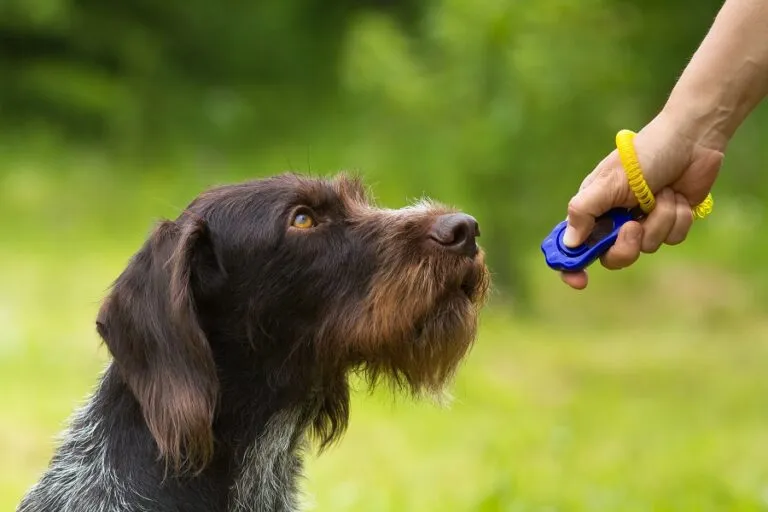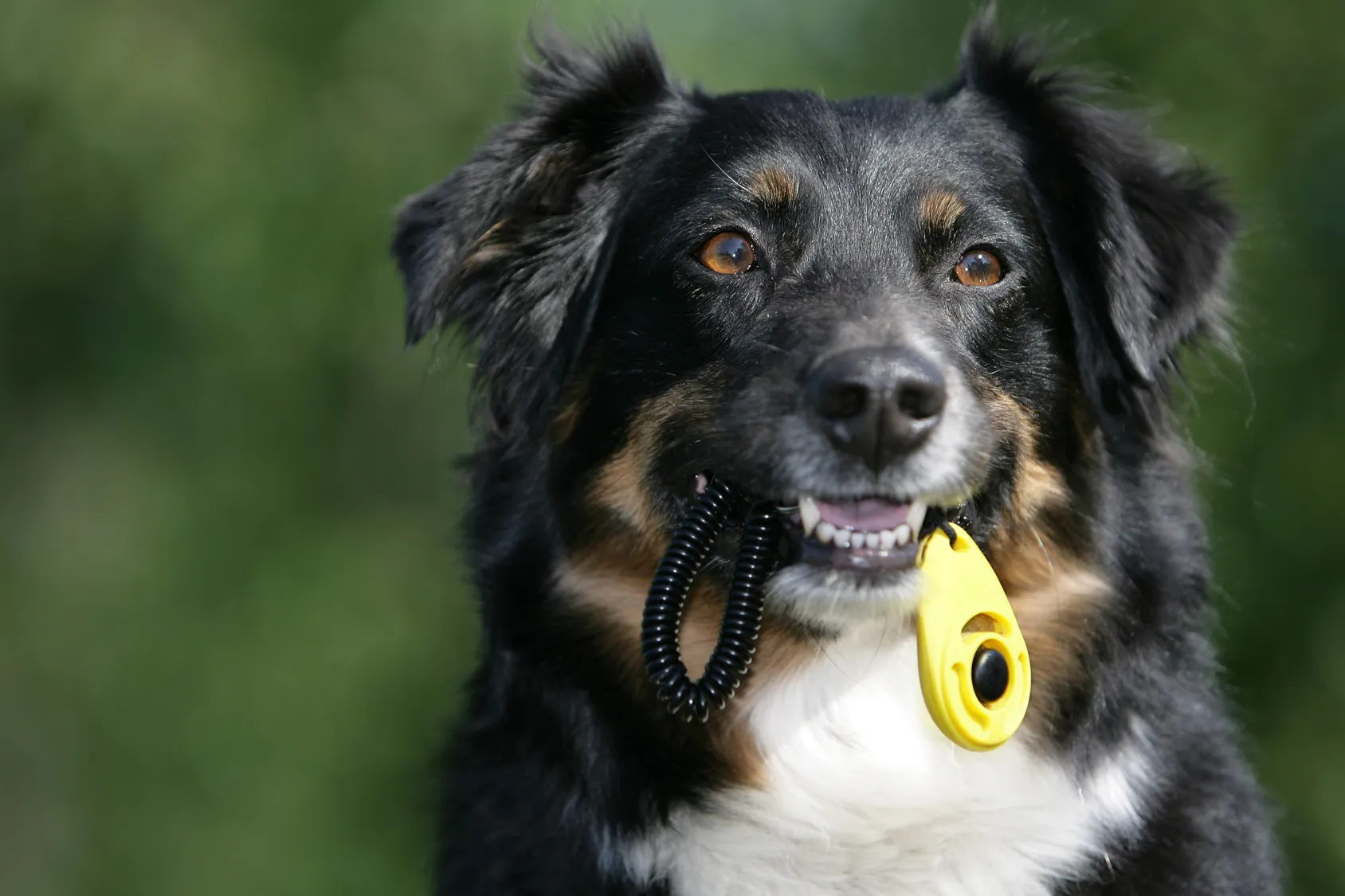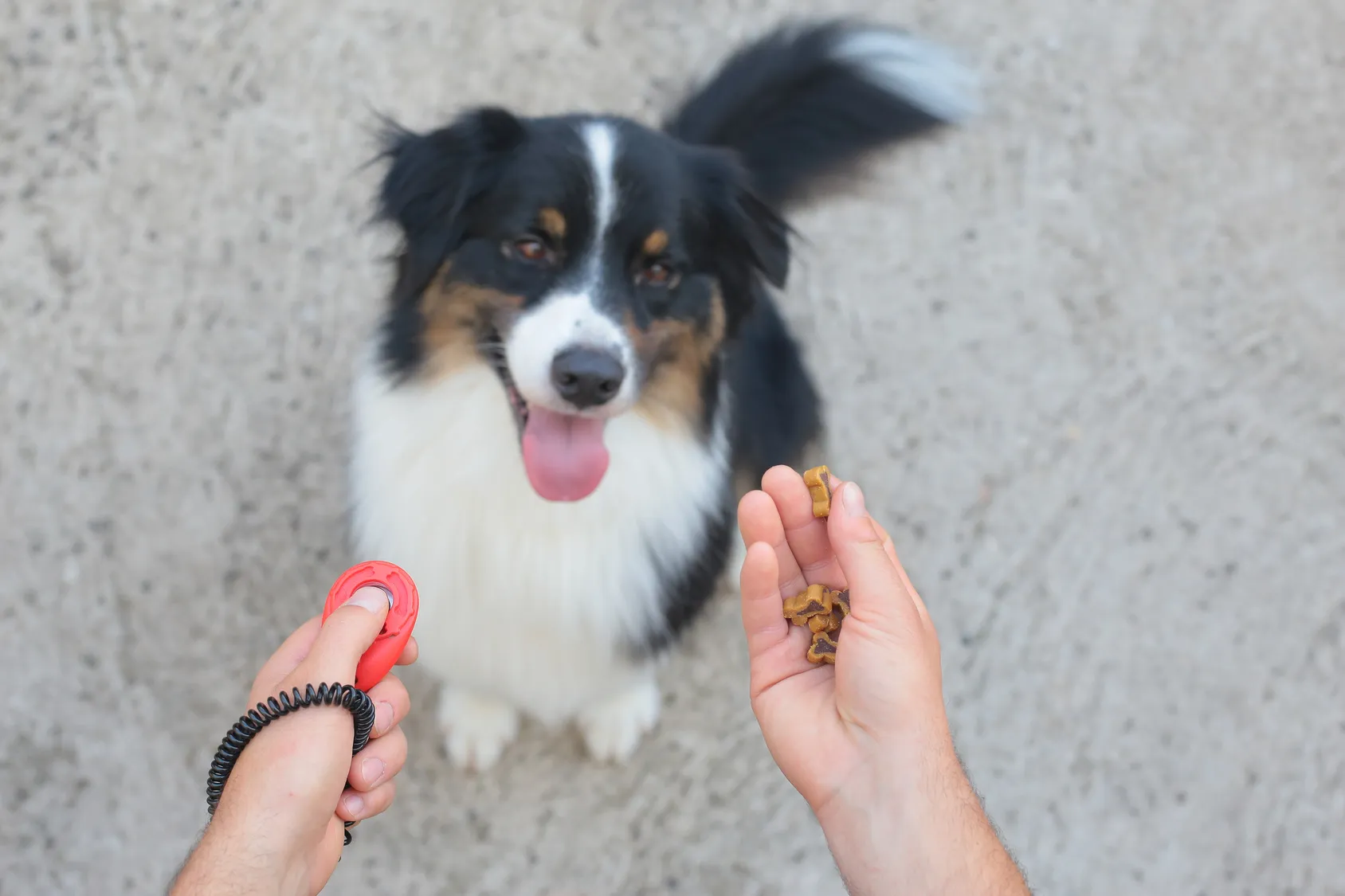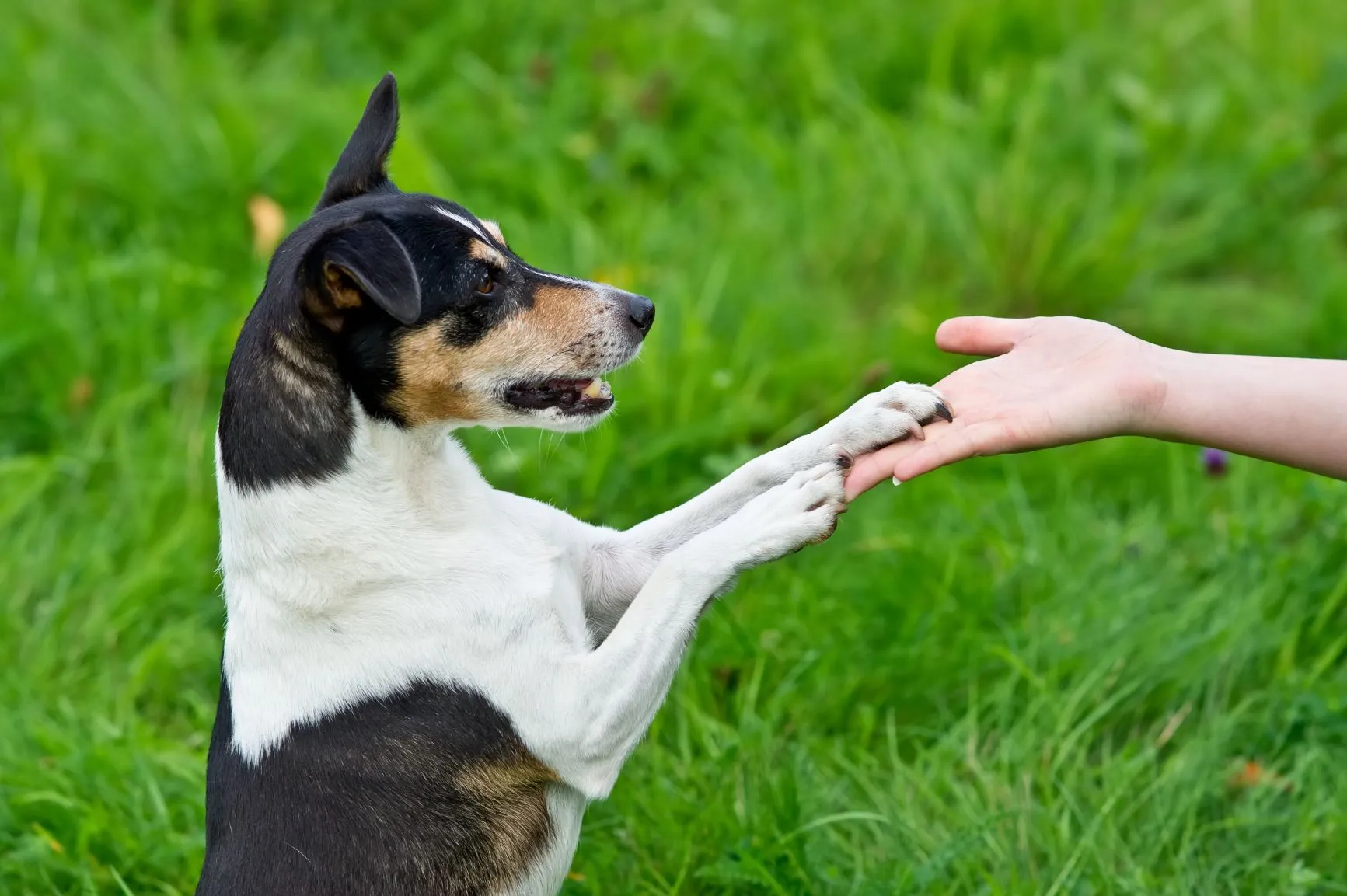Development of Puppies: From Birth to Adulthood
Every puppy goes through several developmental phases until it eventually grows into an adult dog. Learn more what is crucial for the development of puppies into self-assured and serene dogs.
Were you fascinated by clicking toy frogs during your childhood? The clicker is a rather similar device. The working principle is the same: You click on an in-built button and a soft cracking sound is heard. The following article summarises the most important information for you on the subject of clicker training with dogs.

© rodimovpavel / stock.adobe.com
Clicker training can strengthen the bond between humans and dogs.
In very simple terms, a clicker is a handy drop-shaped object with a button in the middle. Some of them are also equipped with an extendable rod, which you can use to point at things.
You can wrap the small device around your hand with a wrist strap. When you press the button, the clicker gives off a crackling sound.
 © DJakob / stock.adobe.com
© DJakob / stock.adobe.com
Clicker training for dogs has been used for years in dog training, horse training and even with cats. Scientific studies prove that clicker training makes it easier for animals to learn tricks and do away with unwanted behaviour.
The principle is that every click represents a reward. So that your dog truly understands the click signal as something positive, you first have to make it familiar with the noise and teach it that the sound is to be understood as an alternative to treats.
You have to consider a few things before starting clicker training with your dog. Don’t worry though, as you and your dog will love the clicker once you get the hang of it!
You only need a few things to start clicker training with your dog: A clicker, a few treats or dry food and an attentive dog.
You can also find very tasty dog snacks in the zooplus online store.
It’s important to teach your pet dog the principle of clicking during the first training session with the clicker. Activate the clicker in the first step and give your dog a treat straight after. Optimal timing plays an important role! Only when you master this will your canine understand the basic principle of dog training.
Repeat clicker training around five times in each training session. Give your dog a treat with every click so that it clearly interprets clicking as a reward. If you give it the treat too late, the clicker loses its reinforcement function. As soon as your dog sees clicking as a reward, you can get started on real clicker training together.
Start clicker training with an exercise that your dog already knows – such as the command ‘sit’. Give your dog the command and click as soon as it has correctly carried out the exercise.
An overview of the most important rules:
 © melounix / stock.adobe.com
© melounix / stock.adobe.com
If your timing is right, you can gradually practice tricks with your dog. In addition, you can help your canine friend to break bad behavioural habits (e.g. excessive barking) in this way. You will manage this if you positively reinforce the right behaviour and ignore bad behaviour.
Another tip is to never force your dog to continue if it no longer wishes to. End clicker training as soon as your dog stops paying attention.
Once your dog has got used to the clicker, you can take it with you everywhere you go.
You’re probably now asking yourself what tricks you can teach your dog with the clicker!
The answer is an endless amount. The difficulty level of course varies. As a beginner, you should start with easier tricks so that neither you nor your dog become overwhelmed.
Your dog has to follow your hand in order for you to teach it to spin in a circle. You can achieve this by putting a treat in your hand. Your dog will generally follow your hand – even if you draw a circle in the air with your hand.
It’s important that you only click and give the reward if your gives you a full turn. If it does this correctly after repeating several times, you can also add a spoken command (e.g. “turn”). You can also reduce the hand movement after a few practice sessions until your dog only responds to your spoken command.
First make your dog sit down for this command, then put a treat in your hand and clench both your fists in your dog’s direction. Choose your distance so that your dog can touch your hands with its paws without any problems from a sitting position.
In order for it to do so, you have to encourage your dog at the start of practice to touch your hands with both paws when standing. If it does this, you must immediately click and reward your dog. You can also gradually leave your hands out of this trick until your dog only reacts to your voice.
 © DWP / stock.adobe.com
© DWP / stock.adobe.com
With this trick, your dog learns to place its two front paws on a flat object. Before you start clicker training with your dog, you should provide a stable, flat object. If your dog doesn’t glance at the object, it makes sense to push it back and forth a little.
The first step is to make sure that your dog shows interest in the object. You then place the object before your dog, click and reward it as soon as it shows interest in the object.
If your dog associates the object with the reward, you can stop clicking and rewarding. Your pet now needs to show a different mode of behaviour so that you reward it. This is where it usually tries out a few options.
You should click as soon as your dog begins to place its paw on the object. Some patience is required in order to capture this behaviour. Stop clicking if your dog has understood after a few repetitions that it should place its paw on the object.
Your dog should place both paws on the object in the next phase. This is done in the same way: If your dog places both paws on the object, click and reward it. As soon as it performs the trick correctly, you can also add a spoken command.
Clicking is suitable for all dogs and all dog owners! Nevertheless, there are a few rules that you should bear in mind for successful conditioning:
You can achieve a lot with your dog if you bear in mind these sources of error. However, having fun is the most important thing. If your dog isn’t keen, so be it. Put the clicker to one side and try again with training once your dog is motivated again.
Find all products related to clicker training in the zooplus online store!
Every puppy goes through several developmental phases until it eventually grows into an adult dog. Learn more what is crucial for the development of puppies into self-assured and serene dogs.
Some dog lovers are sure that their canine companion understands them perfectly. Nevertheless, there are often misunderstandings between humans and dogs in day-to-day life, because what appears self-explanatory to us isn't always so clear for dogs. What do dogs really understand?
Many dog owners kiss their dogs and cats, so we can only hope that they have brushed their own teeth and their pet's too! But joking aside – cuddling and snuggling with animals isn't just unhygienic in certain cases, but can also be dangerous.